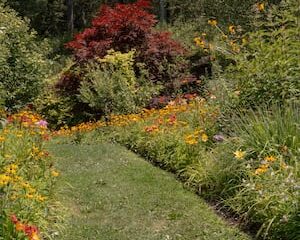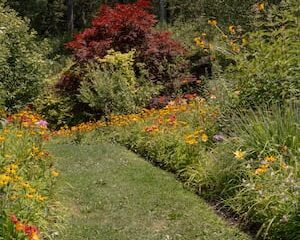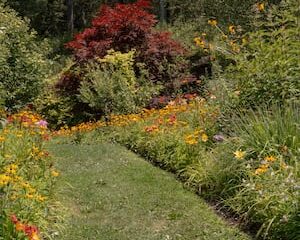Health
Cultivating Wellness: Expert Tips for a Healing Garden This Spring
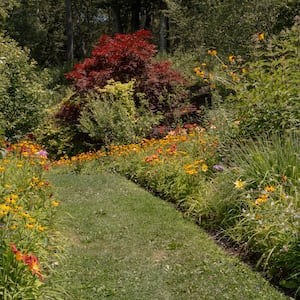
Gardening enthusiasts are discovering the health benefits of cultivating their own medicinal plants this spring. Experts emphasize that engaging with nature not only enhances mental well-being but also provides access to homegrown remedies. According to research, activities like shoveling and weeding can lower hypertension and heart disease rates while improving overall health.
Devon Young, a blogger at NittyGrittyLife.com and author of *The Homegrown Herbal Apothecary*, highlights the surprising number of plants with medicinal properties. With a simple internet search, one can uncover that many common flowers and shrubs, including roses and hibiscus, offer health benefits. Despite the rise of pharmaceutical alternatives, the allure of cultivating these plants remains strong among gardeners.
When creating a healing garden, it is essential to consider plant safety. Some species can be toxic to humans and pets, necessitating careful selection. Resources like the Lady Bird Johnson Wildflower Center and the Plants for a Future database provide valuable guidance on safe plant choices.
Choosing the Right Plants for Wellness
For those aiming to create an ecologically mindful garden, Bridghe McCracken, founder of Helia Land Design in West Stockbridge, Massachusetts, recommends prioritizing native plants. These species not only thrive with minimal maintenance but also support local ecosystems. “When you’re working with native plants, you’re going to have a garden that is amazing for bees… for pollinating butterflies, for a whole spectrum of insects,” McCracken said.
Among her recommended plants are purple angelica, Echinacea, and bee balm (Monarda). The latter, known for its antiseptic properties, can be used to create a mouthwash or cold remedy. McCracken noted that Monarda punctata is particularly striking, blooming for six to eight weeks.
The selection of flowers and herbs goes beyond aesthetics; it requires an understanding of the land. McCracken suggests placing “tea plants” in secondary areas of the garden to allow for beauty and accessibility.
Ethan Dropkin, a horticulture specialist at Larry Weaner Landscape Associates in Pennsylvania, echoes this philosophy, designing gardens that blend beauty and nature. He often incorporates native plants, such as Joe-Pye weed and goldenrod, into residential projects. “The farther out you get, we usually go more naturalistic,” Dropkin explained.
He also recommends yarrow, known for its antibacterial properties, which can be used in poultices or teas. The evergreen leaves add aesthetic value even when the plant is not in bloom.
Exploring Herbal Remedies and Personal Styles
Young emphasizes that various preservation methods exist for herbal remedies, which depend on the plant type. Delicate flowers can be air-dried, while more succulent plants benefit from dehydrators. “I like to use the whole plant — the roots, the stem, the leaves, and the flowers,” she noted, particularly regarding Echinacea.
Interest in wellness gardening spans a range of motivations. Dara Saville, author of *The Ecology of Herbal Medicine*, observed that her students are often driven by a desire to connect with Indigenous healing traditions or to take control of their health. “Many are people who have chronic health problems and are not receiving effective treatment through mainstream health care paradigms,” Saville said.
Describing her gardening style as “feral,” Saville allows her plants to dictate their growth patterns. She particularly values yerba mansa, a native plant known for its therapeutic effects on the respiratory and digestive systems.
In New York City, landscape designer Mihalis Petrou has dedicated himself to showcasing the beauty of native plants. After transforming an abandoned lot in Astoria, he created a vibrant space featuring over 400 native species. His work has gained recognition in fashion, using plants like bee balm and red columbine in high-profile photo shoots.
Petrou draws parallels between gardening and fashion, noting that beauty can enhance well-being. “Art is therapy and landscaping is art,” he said. “Having a wellness garden that is beautiful, that’s medicine in itself.”
As spring approaches, the potential for cultivating a healing garden is ripe for exploration. By selecting the right plants and employing sustainable practices, individuals can create spaces that nurture both body and mind.
-

 Sports1 month ago
Sports1 month agoNetball New Zealand Stands Down Dame Noeline Taurua for Series
-

 Entertainment1 month ago
Entertainment1 month agoTributes Pour In for Lachlan Rofe, Reality Star, Dead at 47
-

 Entertainment1 week ago
Entertainment1 week agoNew ‘Maverick’ Chaser Joins Beat the Chasers Season Finale
-

 Sports1 month ago
Sports1 month agoSilver Ferns Legend Laura Langman Criticizes Team’s Attitude
-

 Entertainment2 months ago
Entertainment2 months agoKhloe Kardashian Embraces Innovative Stem Cell Therapy in Mexico
-

 Sports2 months ago
Sports2 months agoGaël Monfils Set to Defend ASB Classic Title in January 2026
-

 World3 months ago
World3 months agoPolice Arrest Multiple Individuals During Funeral for Zain Taikato-Fox
-

 Politics2 weeks ago
Politics2 weeks agoNetball NZ Calls for Respect Amid Dame Taurua’s Standoff
-

 Entertainment3 weeks ago
Entertainment3 weeks agoTyson Fury’s Daughter Venezuela Gets Engaged at Birthday Bash
-
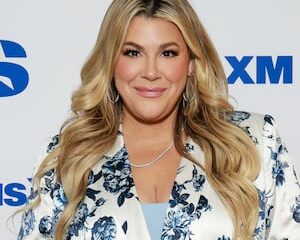
 Sports3 weeks ago
Sports3 weeks agoHeather McMahan Steps Down as Ryder Cup Host After Controversy
-

 Entertainment3 weeks ago
Entertainment3 weeks agoTyson Fury’s Daughter Venezuela Gets Engaged at Birthday Bash
-

 World3 weeks ago
World3 weeks agoNew Zealand Firefighters Plan Strike on October 17 Over Pay Disputes

